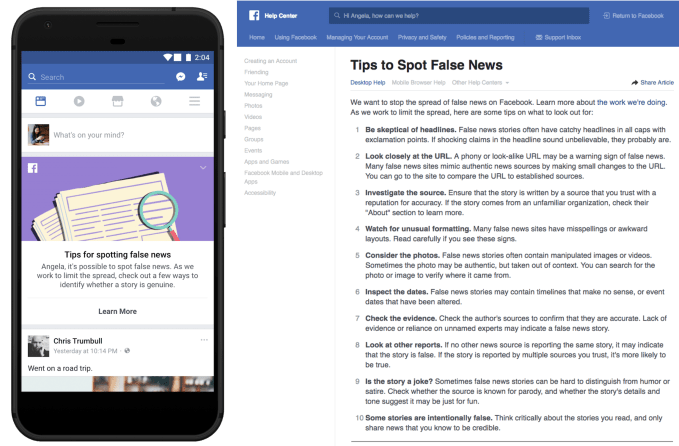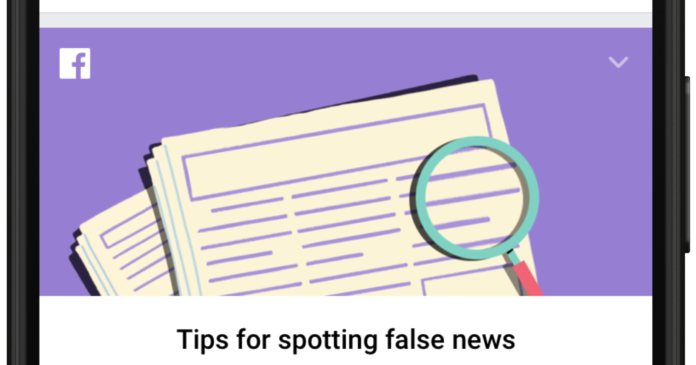
Today Facebook begins opposing misinformation with news literacy education, in addition to product features. This week, customers in 14 countries, including the U.S ., will see an alertabove the News Feed several times over the next few periods that connects them to Facebooks Help Center where they can read Tips to Spot False News. Written while working with news criteria nonprofit First Draft, these tips-off include being skeptical of sensational headlines and checking for phony URLs.
Notably, Facebook is labeling the scourge false news instead of the more popular term fake news. The company tells me this is because fake news has taken on a life of its own, and false news more accurately transmits that its talking about intentionally false content that tries to be confused with legitimate news. After all, Donald Trump has begun labeling as fake news any sentiments or realities with which he disagrees.
Facebook VP of News Feed Adam Mosseri writes Its not a new phenomenon, and all of us tech corporations, media corporations, newsrooms, educators have a responsibility to do our part in addressing it.
Unfortunately, Facebook could have made these tips much easier to ingest and more likely to be read if it had just hosted them inside the News Feed alert itself. By instead relating out to the Help Center, the alerting is likely to be repeatedly ignored by some, while others decline to wait for an outside site to load.

The alarm at the top of the News Feed relates out to the Facebook Help Center where users to be able to read 10 tips for spotting false news
Heres the listing of tips-off consumers will find if they click through the link 😛 TAGEND
Be skeptical of headlines. False news tales often have catchy headlines in all caps with exclaiming degrees. If shocking assertions in the headline music unbelievable, they probably are. Look closely at the URL. A phony or look-alike URL may be a warning sign of false news. Many false news sites simulate authentic news sources by making small changes to the URL. You can go to the site and compare the URL to established sources. Investigate the source. Guarantees to the narrative is written by a source that you trust with a reputation for accuracy. If the narrative comes from an unfamiliar organisation, check their About section to learn more. Watch for unusual formatting. Many false news websites have misspellings or awkward layouts. Read carefully if you see these signs. Consider the photos. False news narratives often contain manipulated images or videos. Sometimes the photo may be authentic, but taken out of context. You can search for the photo or image to substantiate where it came from. Inspect the dates. False news stories may contain timelines that construct no sense, or event dates that have been altered. Check the evidence. Check the authors sources to confirm that they are accurate. Lack of evidence or reliance on unnamed experts may indicate a false news story. Look at other reports. If no other news source is reporting the same story, it may indicate that the story is false. If the narrative is reported by multiple sources you trust, its more likely to be true. Is the tale a gag? Sometimes false news tales can be hard to distinguish from humor or satire. Check whether the source is known for lampoon, and whether the tale details and tone propose it is possible to just for fun. Some narratives are intentionally false. Envision critically about the narratives you read, and only share news that you know to be credible.







